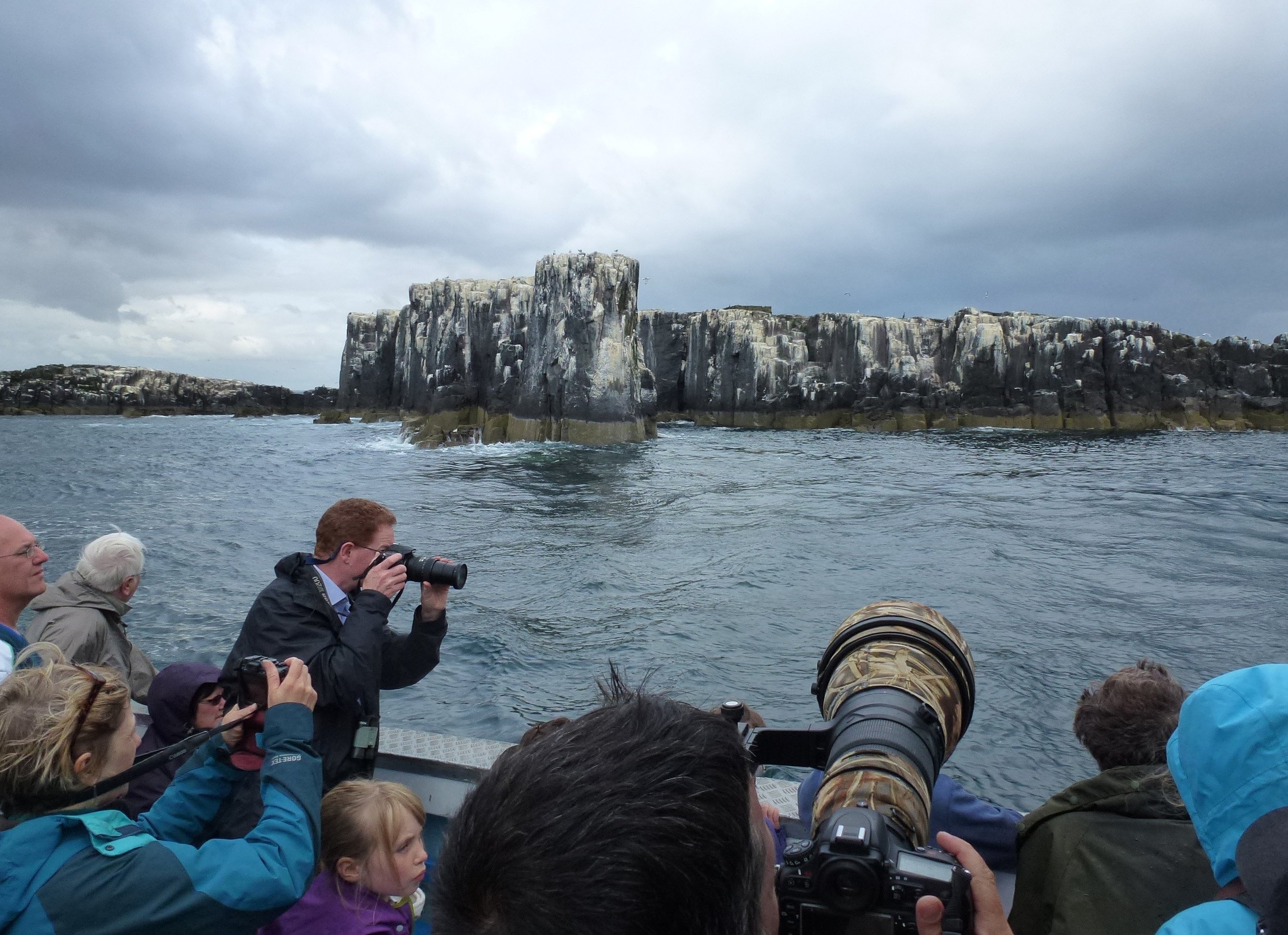Seabird enthusiast Neville Peat visits the fabled Farne Islands off England’s northeast coast.
Viewed from the bustling little tourist town of Seahouses on England's Northumberland coast, the Farne Islands are less than impressive, merely a few dark streaks upon a grey ocean, their profile so low that 11 of the group's 28 islands and islets disappear at high tide.
To wildlife fans, however, their profile soars.
The Farne Islands group, lying three to eight kilometres off the coast, are arguably England's best-known seabird sanctuary, where some 20 sea and coastal bird species breed, not to mention a swag of terrestrial birds. Migrant species include turnstones, wheatears and bluethroats. Some touch down here between Arctic breeding grounds and Africa.

New Zealand is world-renowned for its seabird diversity but at the Farne Islands are several kinds that are unknown in the southern hemisphere, including funny-faced puffins, penguin-like razorbills and pointy-billed guillemots. All three are members of the auk family.
Puffins, burrow nesters, total 40,000 pairs at the Farne Islands but surface-nesting guillemots form the most conspicuous colonies, totalling 37,000 pairs. Terns are numerous here, too - Arctic, sandwich and common - and the gulls, including black-backeds, are similar to our New Zealand ones, though different species.
Mid-June is when breeding is in full swing on the Farnes and the sea between Seahouses and the islands carries a stream of tour boats. They leave from a walled harbour typical for this sometimes stormy North Sea coastline. Open-backed motor launches fill up with visitors to the point where they may remind you of vessels full of refugee boat people.

We visited in early August, by which time the puffins were almost at the end of their nesting season. A few bobbed comically on the choppy sea.
The larger islands feature cliffs formed from columnar dolerite and it is here that seabird cities are created, producing the soundtrack of summer: the shrill cries of the terns, growling of the auks and raucous wailing of the herring gulls.
Grey seals add to the cacophony. There are about 5000 of them. Killed mainly for their oil in the 19th century, just as they were in New Zealand waters, they have made a comeback here under legal protection. About 1600 pups are born annually, their white coats harking back to times when they bred on ice. More floppy than New Zealand's fur seals and sea lions, the adult grey seal is a mottled stary-eyed marine mammal. The two-metre adult males have prominent Roman noses.

Visitors are allowed ashore at the largest of the islands, Inner Farne, whose plain name sits oddly amongst the names of other islands in the group: Wideopens, Wamses, Longstone, Staple and Big Harcar.
Inner Farne is the main base for half a dozen rangers who work for England's National Trust. Best known for its preservation of built heritage, the National Trust also contributes to nature conservation, the Farne Islands being a notable focus.
As well as counting seabird populations and contributing to the long-running research, the rangers also need to know the history of the Farnes, which is about as fascinating as the wildlife. Lighthouses, shipwrecks (by the hundred) and places of worship are key elements.
From the jetty, you pass a delightful small beach, St Cuthbert's Cove, and are directed to buildings on a terrace above the dolerite cliffs. The first building you come to is a stone chapel, completed by the monastic St Cuthbert, founder of Christianity in this part of the world, around 1370, yes, close to 650 years ago. Dimly lit, the interior features some intricate wood carving originally from Durham Cathedral.
Nearby is the island's tallest medieval building, Pele Tower, built as a fort around 1500. For a few decades from the late 18th century, it was a light tower.

A vegetable garden near the buildings, dating from medieval times, is maintained by the rangers, who are based here from March to December. Water supply is as restricted as it was in the past, but solar panels now provide hot water and the power points for electronic technology.
From the cliff tops, there are sweeping views west to the Northumberland coast and east to the rest of the Farne group.
Tour-boat schedules are weather dependent. Rough seas are not uncommon here, and sometimes the Inner Farne jetty is not safe for landings. An adult fare is around $NZ25 for the two-hour trip, and if you are a card-carrying member of Heritage New Zealand (formerly New Zealand Historic Places Trust), you won't have to pay a supplement for landing on Inner Farne.
Seahouses is a characterful harbour town and it is worth waiting a day or two here for the chance to see a group of islands where seabirds abound, more than 80,000 breeding pairs.

















